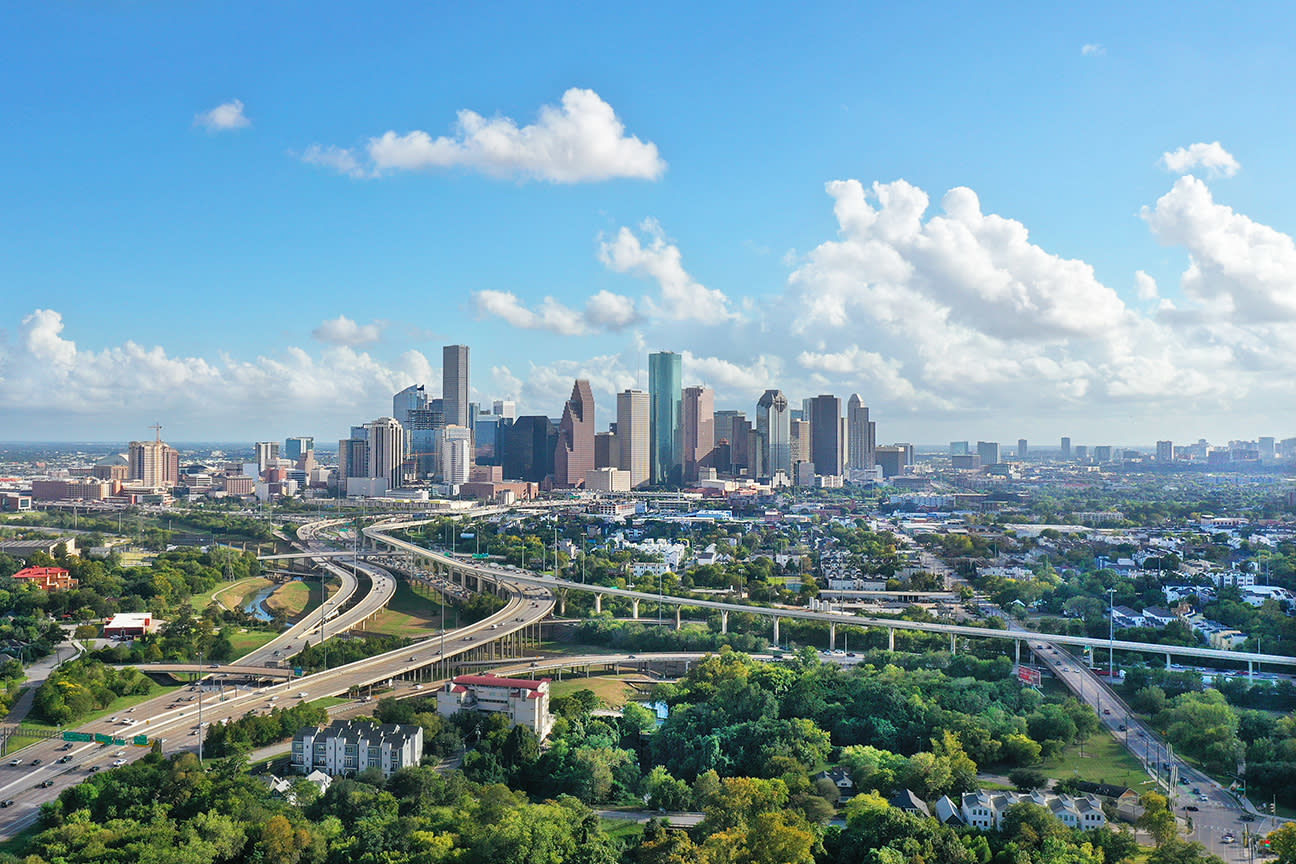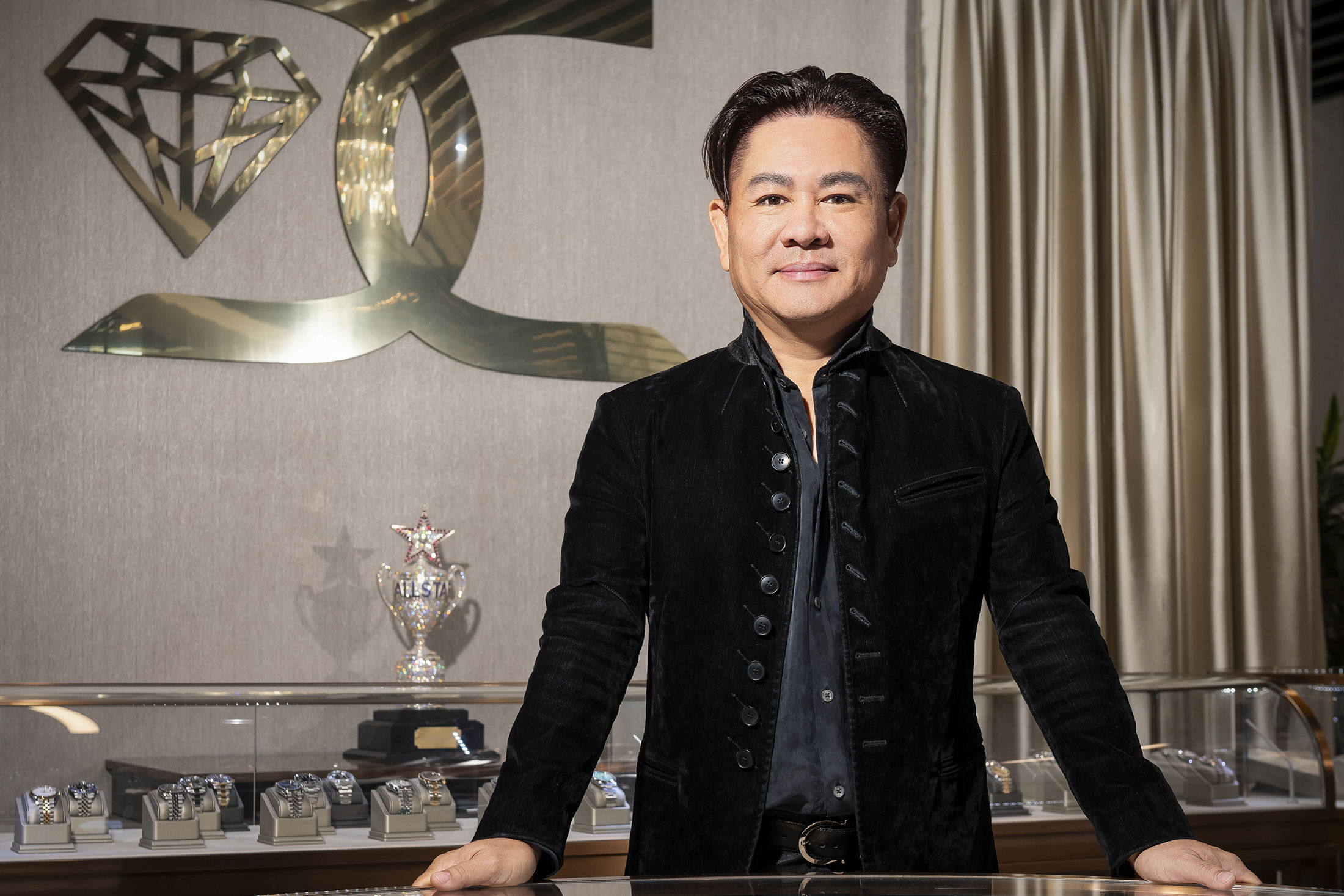Meet the Houston Livestock Show and Rodeo’s New Barrelman

John Harrison was in the drive-through line at a McDonald’s in Indianapolis, grabbing a quick bite between shows at the National FFA Convention, when his phone lit up with a name he never expected to see. Leon Coffee—one of the most beloved barrelmen in Houston Livestock Show and Rodeo history—was calling. Harrison forgot his order, pulled out of line, and answered. Coffee, who was retiring as Houston rodeo barrelman, a position he held for 31 years, got straight to the point: He wanted John to take his place. The moment left Harrison tearful, honored, and a little bit in shock.
To understand how Harrison arrived at this defining moment, you have to trace his story back to a ranch in Soper, Oklahoma, where he grew up steeped in the rodeo world. While born in Paris, Texas, he has lived on that ranch in Soper for 46 years. His grandfather, Warren G. Brown, known as Freckles Brown, was a world champion bull rider, and the ranch was more than just a home—it was a training ground where rodeo traditions were passed down through generations. At 6 years old, he saw a performance that would shape his future in the field.
“[The performer] was Roman riding on top of two bulls and his wife was trick riding upside down on another horse,” Harrison says. “It was crazy! I saw them after the rodeo, and it just looked like fun. I was like, ‘He’s been on top of two bulls. He’s hanging upside down on these horses.’ And I thought, ‘Man, that’s what I want to do.’ So I truly set my heart into it.”
His early immersion in rodeo wasn’t limited to just watching performances. He began his training at a young age, starting with Roman riding (where a rider stands on two horses) and other activities demanding skill and showmanship. He started rodeo riding and jumping through fire in high school. “All that fun stuff,” he calls it. Harrison also participated in trick roping, which he learned from his father, who, despite being a talented trick roper himself, was too shy to perform in front of crowds. By the time Harrison was 21, he was traveling to perform, but had never thought about clowning.
That changed one fateful day at a rodeo in Dubuque, Iowa, when the scheduled clown failed to show up. The stock contractor, quickly looking to fill that void, asked Harrison to step in.
“It was nerve-wracking,” Harrison says, recounting the moment he had to slip into a clown’s shoes for the very first time. “I was ready for the show to be over before it ever started.” Fortunately, the announcer that night, Roger Mooney, stepped in to guide him through every joke. Harrison soon realized that crafting comedy for a rodeo crowd was not as simple as delivering a punchline: Timing, local culture, and audience engagement all played critical roles.

During this period of trial and error, Harrison steadily honed his comedic instincts. He had already built up a solid foundation of performance skills—Roman riding, trick roping, and trick riding—and it dawned on him that the more versatile he became, the more he could stay booked. And he's created several award-winning comedic acts. One of them, a playful satire of rodeo queens, involves driving a convertible into the arena and then leaping onto a horse trained to jump over the car. Another is a comedy trick-riding routine during which Harrison intentionally botches moves and exaggerates mistakes, to the delight of the crowd.
He eventually added a new star to his lineup: an American Paint Horse named Snoopy. Bought as a colt with hopes of making him a trick-riding mount, Snoopy turned out to have a completely different personality—laid-back, mischievous, more like the dog he’s named after than a performance horse. Rather than give up on him, Harrison adapted his training, teaching Snoopy to sit, lie down, and even walk on his hind legs.
“It took me three years to build his back muscles up to the point that he could hold himself in the air to be able to walk 30 feet without coming down,” Harrison says. Now, the pair performs a wildly popular bit in which Snoopy charges into the arena like a bucking bronc, chases Harrison out of the ring, and then flops to the ground when told to play dead.
Aside from the cackles, Harrison is especially focused on staying grounded in his role’s deeper responsibilities. As a barrelman, he is also tasked with protecting the bull riders—a job that is especially important in an arena as large as Houston’s. “The barrelman has a real job and it’s not just entertaining,” he says. “If a cowboy gets bucked off to the center of the arena, I need to pick my barrel up, take that toward that cowboy, and give [them] the opportunity to get behind my barrel for bulls chasing.”
As Harrison steps into one of the most iconic roles at the Houston Livestock Show and Rodeo, he’s mindful of the immense legacy he’s inheriting from Leon Coffee and ready to bring his own blend of energy, skill, and humor to the arena. And if decades from now, people remember him not only for his antics but also as a genuine man who honored a cherished rodeo tradition, he says he’ll consider his mission accomplished.
“My grandfather was one of the best bull riders in the world, for as old as he was,” Harrison says. “But people [who] knew my grandpa,] talk about how good of a guy was. I think if I retire, and people know me as a good, Christian guy [who] was honest then I’ve done my job.”
Correction: An earlier version of this story stated that John Harrison saw Leon Coffee perform when he was six years old. It was another performer.




